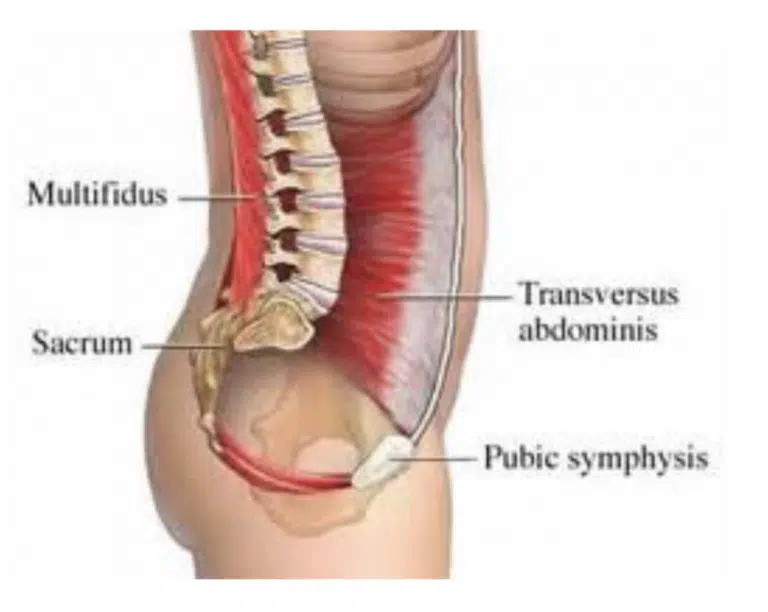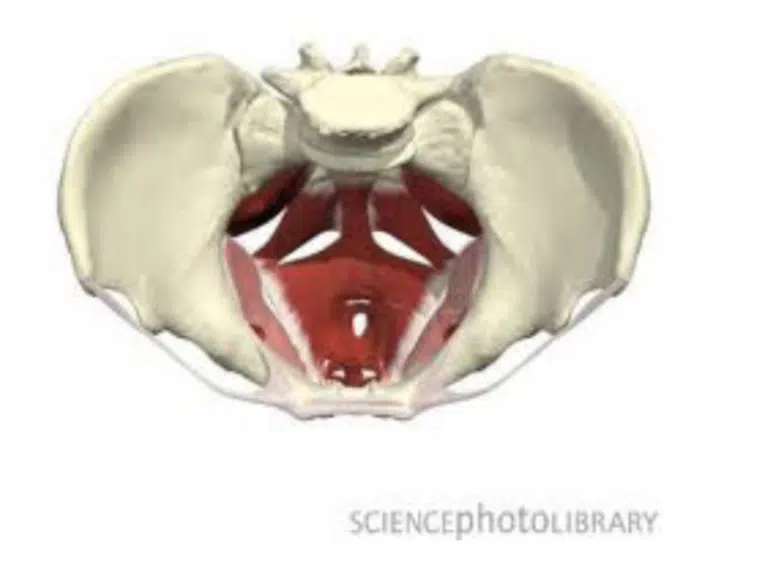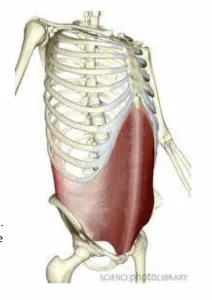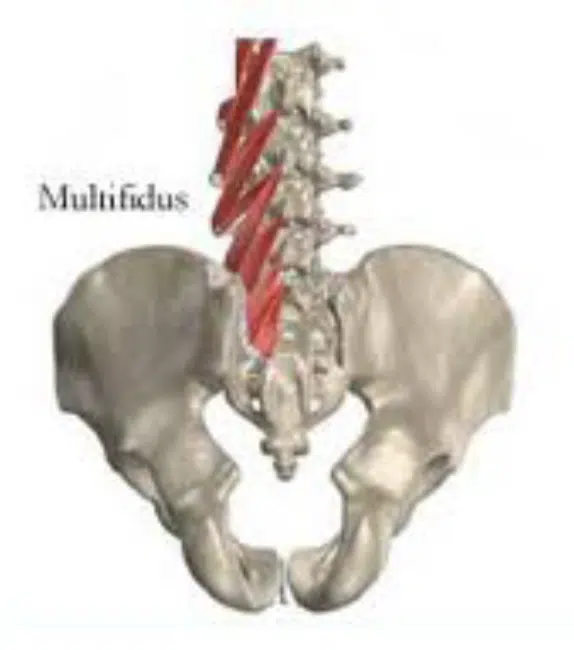What is the ‘Inner Core’?
The inner core is made up of your pelvic floor muscles, transverse abdominals, and your diaphragm.
What does the Inner Core do?
This system normally works automatically to stabilize and protect your spine whilst also preparing it for load. For example, immediately before you begin to move your inner core has switched on to counter balance such movement.

Activating Your Inner Core
Empirical research has shown as a result of pain and injury, the inner core switches off. If not retrained, the inner core will begin to engage after movement commences; rendering the body vulnerable to re-injury. Accordingly, exercise and retraining, starting with the inner core, is vital to stop a common cycle of reoccurring back pain and injury. Your inner core comprises of 4 muscles which can be seen as a canister. The pelvic floor muscles (PFM) are aptly named, as they sit at the floor of the pelvis. The diaphragm could be seen as the pelvic roof, and provides the lid to the canister. The transverse abdominis (TA) wraps around the midline and acts like a corset whilst being reinforced at the back with the multifidus (MF) muscles which span from one vertebra to the next.
NOTE: It is VERY important you have specific exercises designed for you. This is crucial to achieve the desired results, whether it is to improve continence, post natal rehabilitation, recovery from prostate surgery,improve sexual function and/or to support the back and pelvis.
Please read on for more details about the inner core muscles and how to activate them:
1) Pelvic Floor Muscles (PFM)

- Lie down on your back, bend your knees and place your feet 10cm from your hips
- Set your neutral pelvis, hip bone and pubic bone in a horizontal line
- Relax your back and gluteal (buttock) muscles
- Take 2-3 deep breaths to calm your nervous system
- Find the PFM by pretending to stop yourself urinating
- Make sure you ISOLATE these muscles, ensuring you are not squeezing your gluteals or abdominals (this is a very common mistake!)
- Now start to feel an elevator like quality to the PFM, feeling you are squeezing and lifting the PFM up 4 different levels.
- Please discuss what you need to do from here with your treating physiotherapist
2) Transverse Abdominis

- Lie down on your back, bend your knees and place your feet 10cm from your hips
- Set your neutral pelvis, hip bone and pubic bone in a horizontal line
- Keep your ribs relaxed and still throughout the exercise
- Relax your back and gluteal (buttock) muscles
- Take 2-3 deep breaths to calm your nervous system
- Perform a pursed lip exhale, like you are blowing out a candle (not too hard). As you exhale gently lift the pelvic floor muscles and feel a slight flattening on the lower tummy
- Alternatively, try gently drawing your lower tummy towards the spine. Be carefully you do not engage the obliques with this cue.
- SUBTLE AND GENTLE activation is the key to achieving a true TA contraction.
- Try and hold the TA contraction for 10 seconds, whilst continuing to breathe
normally. - This exercise could also be performed whilst lying on your side or 4 point
kneeling (discuss the best option with your physio.
Multifidus
Did you know you have deep stabilising muscles from your pelvis to your skull, which should act like air bags to help stabilise your spine? These small but crucial muscles are called your multifidus, and are often inactive in people with pelvic or back pain. The effect is a compensatory stiffening of the bigger spinal muscles.

- Lie on your tummy with your legs straight and your heels touching.
- Relax your back and gluteal (buttock) muscles.
- Take 2-3 deep breaths to calm your nervous system.
- As you exhale gently draw up the pelvic floor muscles.
- Then imagine you have a line between your two sacroiliac joints.
- Try and hold this contraction for 10 seconds as you continue to breathe
normally. - As this exercise is difficult to perform correctly, your physiotherapist can assist
in finding different options.
Core Stability
Core stability refers to the ability of the deep postural muscles to stabilise and protect the spine during functional movements. It is these muscles that support our posture, holding us upright against gravity, and allows us to move efficiently. This is why when we engage the core during exercises, it needs to be subtle and gentle. “Just a little bit” you will hear us say for good reason. If you have this right, you will breathe easy, and develop a stable and strong (vs stiff and rigid) foundation.
Contributor

Angela James – Principal Physiotherapist
Learn more about Angela James

